The very name of the Zanskar valley creates in mind the image of a distant mysterious land; a place hidden somewhere in the hills where there aren’t many; a charming land where time stands still and everything is beautiful beyond imagination. Is the image correct? Yes it is. Zanskar is one of those few places in our country that are not yet affected by the tourism craze. In fact, it is a mystical land beautiful enough to wipe you off your feet; and still manages to maintain its infrequent etiquette. Lush green of the hills of Suru, barren brown of a cold desert, graceful white of powerful glaciers, deep blue of the lakes, noisy flow of the rivers, majestic peaks around; and warm hospitality of its people; this is what Zanskar has to offer.
flikr
Zanskar covers an area of about 7,000 square kilometers, at an altitude of 3,500-7,000 meters. It is connected to the rest of the country by just a single motorized road via Kargil. Another route is under construction at Shinku La. Once completed, this will connect Jispa in the Lahaul valley to Padum in Zanskar. For now, however, this road is partially completed and can only be covered on foot.
Some of the topics I will cover in the article below are about how to get to the Zanskar valley, the best time to visit, where to stay, what to see, how to commute and availability of basic amenities. I will also suggest an example of an itinerary detailing how you can plan a trip to the Zanskar valley. If, after reading the article, you have other questions; you can comment and ask at the bottom of this page.
Why visit the Zanskar valley?
Let me start by talking first why you would like to visit the Zanskar valley and not elsewhere. The natural beauty of the place, as I mentioned above, is beyond comparison; and will definitely leave you wanting to come back for more. But it’s not just the landscapes and the enchanting views, but everything about Zanskar that is an experience in itself.
The simplicity and hospitality of its people will leave you touched and humiliated. Zanskar has a little to offer everyone. It is a historic place and there are several ancient monuments here, such as Phugtal Monastery and Fort Zangla; it will keep fans happy with the story. Kargil’s drive to Padum satisfies his desire to get off the road. The entire journey is an uninterrupted series of places to visit; and you will take breaks very often. Upon reaching Padum, you really reached a place that remains frozen in time. You would have reached an infrequent destination without risking being too remote.
flikr
Is the Zanskar valley safe?
And the answer is a definite yes. It is a place of very simple-minded people and a trip here is very safe. With that said, no one can really guarantee your safety if you start to behave carelessly. You should keep in mind that you are driving through a remote region where even the roads are not built properly. There is also wildlife here. Just drive wisely, don’t walk around the villages; stay on the main road, plan your night in the main cities; ask the locals if you were unsure of anything and you will be fine. Search the web and you will find several travel diaries of couples and singles who went to Zanskar and did not face any problems.
Where is the Zanskar valley
Zanskar (also written and pronounced as Zangskar or Ladakhi Zangs Dkar) is a sub-district or tehsil of the Kargil district and is located in the eastern half of Jammu and Kashmir. The administrative center is Padum. Zanskar, along with the neighboring region of Ladakh, was briefly a part of the Guge kingdom in Western Tibet. (Source wiki)
To reach Zanskar, you will first need to reach Kargil and start driving towards Padum through the cities of Sankoo and Rangdum. From now on, the road will finally end in Padum and, for your journey back, you will have to drive back to Kargil. In the future, when the road through Shinku La is completed, you can also get here via Keylong and Jispa.
How to get to the Zanskar valley?
To reach the Zanskar valley, you will first have to reach Kargil. You can first travel to Srinagar or Leh City and then drive to the Zanskar Valley from there via Kargil. When the third route via Shinku La is completed, you can also travel to Zanskar via Manali.
How to get to Zanskar from Delhi?
To explain the route with the help of an example, I will take Delhi as a starting point. Even if you were from a different city, you will still have the idea of the route after following the information below. From Delhi, the route to reach Zanskar will be the one mentioned below.
Delhi – Ludhiana – Pathankot – Jammu – Patnitop – Anantnag – Srinagar – Sonamarg – Drass – Kargil – Rangdum – Padum
Traveling according to the route above, your journey will total approximately 1300 kilometers; spread over a minimum period of 4 days. This is the easiest and fastest way to get to Zanskar.
flikr
How to get to Zanskar from Leh?
The second way to reach the Zanskar valley is to travel on the Manali Leh road and through Ladakh. The route will be as mentioned below.
New Delhi – Chandigarh – Manali – Keylong – Jispa – Sarchu – Pang – Leh
Traveling on the above route, you will drive a total of 1100 kilometers from Delhi and arrive in the city of Leh. You will continue driving to Padum by the route below.
Leh – Lamayuru – Mulbekh – Kargil – Sankoo – Panikhar – Yangon – Padum
The second, as you can see, is the longest of the two routes and will take at least 5 days to complete if rushed; and traveled for long hours.
Distance between Zanskar Valley and Leh
The journey from Leh to Padum is approximately 500 kilometers and will take two days for a complete stop in Kargil. This will make the entire journey from Delhi to Padum via Leh about 1600 kilometers.
How to get to the Zanskar valley via Jispa / Darcha and Shinku La
This is future information from the state, because this road is still under construction. Once completed, you can reach Padum from Manali via Rohtang Pass, Keylong, Jispa, Darcha and Shinku La Pass. As of now, the road from Darcha to Shinku La has been completed; but the remaining distance from Shinku La to Padum is still a walking route. However, when this route is operational, you will be able to descend from Delhi to Padum in just two days (Delhi to Manali on day 1 and Manali to Padum on day 2).
Another route that is still being planned is via Nimmu, taking Chadar’s journey. Once the road is complete, you can reach Zanskar from Leh via Nimmu in a single day without having to go to Kargil first.
Nearest airport to Zanskar Valley
The city of Leh has the airport closest to the Zanskar valley. There are regular daily flights that you can board to Leh, but most of them are now from Delhi. So, if you were coming from a different city, you will first have to take a flight to Delhi and then to Leh; and then drive to Zanskar from there
Nearest train station to Zanskar Valley
The train stations in Srinagar and Jammu are the railroads closest to the Zanskar valley.
Zanskar valley by car
All of the information above was in terms of the geographic location of the place. Now, let me talk about how to get to the Zanskar valley in terms of travel mode. Bringing your own car or motorcycle will definitely be the best way to do it; because it will give you the flexibility to plan your itinerary at your convenience and explore to the fullest. The Zanskar valley is still a remote area where the frequency of public transport is not very high. So, if you arrived by your own vehicle, you will save a lot of work and money.
An SUV with good ground clearance will be the best car for the Zanskar valley. It does not necessarily have to be a 4×4, but a good ground clearance is required. The road from Kargil to Padum starts to deteriorate after Sankoo and then turns into a completely dirty trail a few kilometers later. Although it never turns into a nightmare unit, the condition of the road can get quite bad in some places.
With that said, I have a lot of people traveling from Sedans and Hatchbacks as well. Many local drivers use Maruti Hatchbacks as a taxi on the route. You can do the same, too, but just be mentally prepared so that your car’s belly ends up kissing the ground in places. You will also be at risk of getting stuck in a passage or mud along the route and; you will need good driving skills to manage.
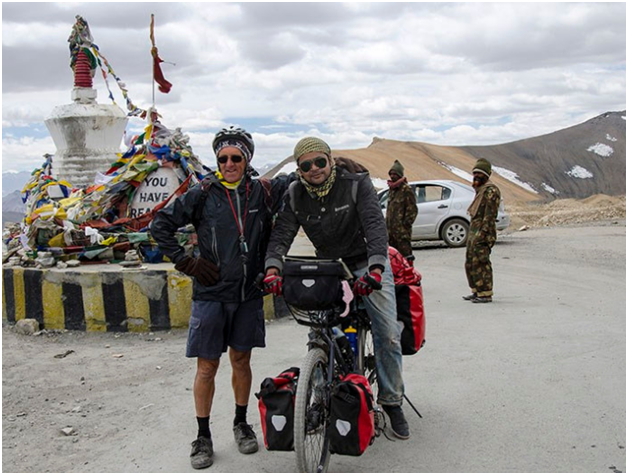
flikr
Zanskar valley by bicycle
If you were traveling on a motorcycle, the first thing to consider is the duration of the trip. A trip to the Zanskar valley will easily take at least 9 to 10 days; which means that you will be carrying a lot of luggage. So, if you were thinking of riding with a rump, make sure you are doing it on a motorcycle with a bigger engine; like those on the Royal Enfield 350 or 500 CC. The additional energy will be very useful when you have two people on the same motorcycle with all the luggage. The general design of the ER also makes baggage tying a little easier; and convenient for long trips for both rider and rump.
However, this does not mean that you cannot ride a smaller motorcycle. In fact, you can also take this trip on a 125 CC bike; but make sure you walk alone and as light as possible.
Prepare your vehicle and take a tool kit
If you travel by car or motorcycle, be sure to prepare yourself for the difficult journey ahead. The availability of mechanics on the route is mainly limited to Kargil, Srinagar and Leh. Mechanics are also available elsewhere, but only for minor corrections. If it was something important, you would have to return your vehicle to Kargil, Leh or Srinagar. Along the route too, you will be driving through highly remote areas and will be in the middle of nowhere, so that even the slightest breakdown can be catastrophic. In order to remove any chance of this happening, make sure you receive service from the vehicle in advance. Repair or replace anything that looks risky.
You don’t really need to transport spare fuel to the Zanskar valley. A full tank in Kargil will be enough to take you to Padum and back. Even in Padum, you can easily buy gas and diesel. However, you should definitely bring some basic replacement parts and a tool kit for your vehicle.
How to get to the Zanskar valley by private taxi
To reach Zanskar by private taxi, you can fly to Srinagar or Leh; and rent a taxi from there to get to Padum. The thing, however, is that a taxi in these areas is a very expensive and complicated affair. Local taxi unions in these areas have made it a complete headache for tourists. For example, if you were in Leh and want to visit the Zanskar valley; first you will need to rent a private taxi for your trip from Leh to Kargil. This taxi will only take you to Kargil and you will not be allowed to go further. The same thing also applies on the Kashmir side. Instead of Leh, if you were in Srinagar, even then the taxi you hired in Srinagar will only take you to Kargil and no more.
After arriving in Kargil, you will need to rent a taxi registered by Kargil for your trip to Padum. Now, this taxi will be able to take you to Padum, but it will not be able to engage in any local tourism. To move around Padum and visit nearby places, you will need to rent another local taxi that can also be used to take you back to Kargil. From Kargil, then, you will rent a fourth taxi for your trip back to Leh or Srinagar.
Cost of private taxi to Zanskar Valley
This whole episode of renting several taxis is not only an annoyance for tourists, but it also punctures their wallets. A private taxi will cost Rs. 10,000 from Leh to Kargil; and then about Rs. 13000 for Kargil and Padum. Then, you will rent a local tourist spot, which will cost around Rs. 5000. And then you will spend another Rs. 23,000 in taxis to travel back to Leh. About the same cost also applies to trips on the side of Srinagar. In summary, renting a private taxi from Leh or Srinagar to Padum and the return trip will cost about Rs. 50,000 at least.
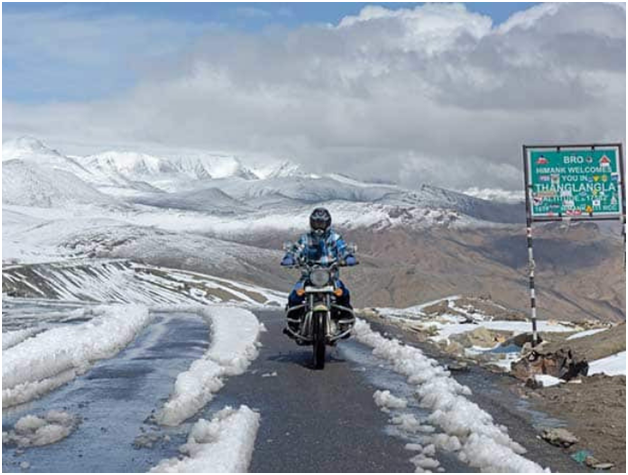
flikr
Shared taxi to Zanskar Valley
Now, since private taxis cost so much effort and money, an even better way to travel would be by shared taxis. I’m not saying it would be less of a problem, but at least it would save some money. There are really no set times for these shared taxis; and you will have to reach the bus stop to board one.
Depending on whether you are traveling from Leh or Srinagar, you will first have to find a shared taxi to Kargil. This will cost around Rs. 500 to Rs. 600 per person. From Kargil, if you are lucky, you can find a shared taxi to Padum, which will cost you more Rs. 500 to Rs. 600. Otherwise, you will have to interrupt the journey in several parts. The good news is that it is not very difficult, but it can take a while. From Kargil, you can first take a taxi to any of the places between them, such as Sankoo, Panikar, Parkachik or Rangdum. From that city, you will have to find a taxi for your journey onwards. There is no shared taxi to tour Padum; and you will have to hire a private taxi for that.
I know this is not the easiest way to travel, but it can save you a lot of money. From Leh or Srinagar, you will reach Padum in about Rs. 1000 to Rs. 1500; compared to about Rs. 22,000 to 25,000 that you would pay for a private taxi. Save a lot of money, don’t you?
How to get to Zanskar Valley by bus
Yes, you can also complete this bus trip, which will cost the same as a shared taxi. The problem, however, is that the bus frequency is not so good. You can easily find a bus from Srinagar or Leh to Kargil. These double on daily buses and you can board one of the Srinagar or Leh Bus bus stops. Problem, however, arises between Kargil or Padum. There is only one weekly bus on this route from Leh to Padum. Therefore, when you are in Kargil, check the Bus stand for the availability of a Bus for Padum. If there is one in fact, you can embark. Otherwise, you will have to complete the journey in shared taxis, as I explained above.
Zanskar in winter
Getting to the Zanskar valley during the peak winter months is not really an option. You can travel to the valley only as long as the road remains open. From Srinagar, you can make this trip between the months of May and October, while the Srinagar Leh highway remains open. Once Zojila is snowy, you cannot reach Kargil from Srinagar and can only travel to Sonamarg.
From Leh, the window opens a little and the journey can also be made in late April and November. The road between Leh and Kargil remains open throughout the year; but in winter, the Kargil Padum route is blocked and can only be traveled between late April and early November.
Weather in Zanskar Valley
Cold and unpredictable are the two words that most describe the climate in the Zanskar valley. The place remains buried under the snow from January to March; completely inaccessible by road. The snow starts to melt in April and the road from Kargil to Padum is declared open in late April or early May. From May to September, the climate remains mostly pleasant during the day and cold at night. Winter comes in October and in November, it can snow here anytime.
The weather in Zanskar will also change where you are and what part of the day it is. The sun at this altitude is quite severe and will cause severe burns if you are not careful, despite the cold climate. The days will be a little hot in the summer, but the temperature during the night will drop dramatically.
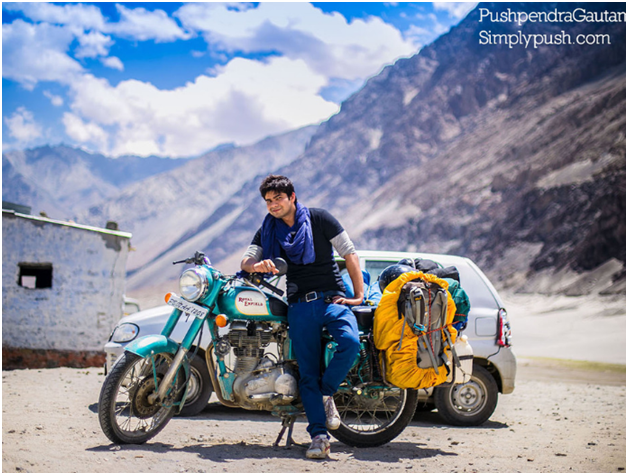
flikr
Temperature in Zanskar Valley
Below is a month a month of how the climate and temperature vary in Zanskar Valley.
Zanskar Valley in January:
Average temperature of -10 degrees Celsius. Heavy snowfall throughout the region and the road remains closed. The only way to reach the Zanskar valley at this time is by hiking in Chadar.
Zanskar Valley in February:
Average temperature is -10 degrees Celsius. Heavy snowfall throughout the region and, at this time, it is not possible to reach Zanskar by road. The amount of snow on the ground increases even more in February.
Zanskar Valley in March:
Average temperature of -5 degrees Celsius. The roads remain blocked.
Zanskar Valley in April:
The average temperature rises to 0 degrees Celsius. BRO begins work on cleaning the road from Kargil to Padum. Connectivity is generally restored in late April.
Zanskar Valley in May:
A great time to visit Zanskar. The average temperature rises to 10 degrees Celsius, but the nights still remain close to zero. Nice weather and you can still see snow at high altitudes.
Zanskar Valley in June:
The tourist season is in full swing. The average temperature rises to 15 degrees Celsius.
Zanskar Valley in July:
The temperature will remain between 15 and 25 degrees Celsius, on average. Another great time to plan a trip to Zanskar.
Zanskar Valley in August:
July and August are monsoon season, which makes people wonder if this is a good time to visit Zanskar or not. The entire region, including Ladakh and Zanskar, falls under the rain-shaded area, which means it doesn’t rain much here. However, you will find monsoons and a lot of rain around Srinagar, Sonamarg and Drass if you are coming from that direction.
Zanskar Valley in September:
September is considered one of the best times to visit Zanskar. The average temperature will remain close to 10 degrees Celsius. Monsoons will disappear a long time ago, but there will still be a lot of green in the Kashmir and Suru valleys. The number of tourists at this time is not as high as in previous months.
Zanskar Valley in October:
The winter statistics to settle and the average temperature drop close to 5 degrees Celsius. High altitude areas begin to witness snowfall during late September and October.
Zanskar Valley in November:
Winter came and the weather would be cold. The average temperature drops to 0 degrees Celsius, and even lower during the nights. You can visit here at the beginning of the month, but it is not considered the best time for a trip.
Zanskar Valley in December:
The road from Kargil to Padum is currently closed. The average temperature drops to -10 degrees Celsius and around -20 degrees at night. It can snow at any time and life in the Zanskar valley takes a turn on the hard side.
Best time to visit Zanskar Valley
In fact, I covered that topic in detail in another article, When is the best time to visit the Zanskar Valley. Considering the fact that you can only travel to Zanskar by road from May to October; anytime during those months will be good enough. But the best time to visit the Zanskar valley will also depend on what you want to see; and there are some things that you will have to consider. If you want to see some snow on the ground, try to travel in early May. If you want to avoid monsoons on the way, don’t plan in late July or August.
October is generally considered a bad month to visit due to the cold weather and the fact that it can snow at any time and block the road. But this is a good time if you want to catch a live blizzard.
In general terms, September is generally considered the best time to visit the Zanskar valley. The weather will be pleasant and there will not be many tourists around. The monsoons would have passed, but the scenery around Sonamarg, Drass will still be green. The Zanskar desert will be thriving with colors around and you will fall in love with the place. If you’re lucky, you can even get some snow at the end of the month.
Clothing for the Zanskar valley
As the best time to visit, this will also be different for everyone, depending on the time you arrived here. From November to March, you cannot reach the Zanskar valley, so I will leave these months out. October and April are still winter, so a trip in these months means that you should bring wool, gloves, woolen socks, muffler, thermal clothes and a good quality heavy windproof jacket.
From May to September, your regular cotton, some light wool and a heavy jacket will do. The trick is to bring clothes that you can wear on top of each other and in layers. The weather in Zanskar really varies depending on the time of day and where you are. During the day, it will be very hot and you can easily walk with regular cotton. At night, however, it will be freezing again. Staying in the sun will make you feel warm, but you will feel the cold the moment you step in the shade.
So, while you are packing clothes, don’t bring all the heavy wool. Just bring a little lost and comfortable clothes to be used in layers. If you feel cold, you can add another layer. If you feel hot, you can remove a layer until you feel comfortable.
For more information on clothes to take, read Clothes for the Ladakh trip – What to take. Ladakh says in the name, but the details are the same for Ladakh and Zanskar.
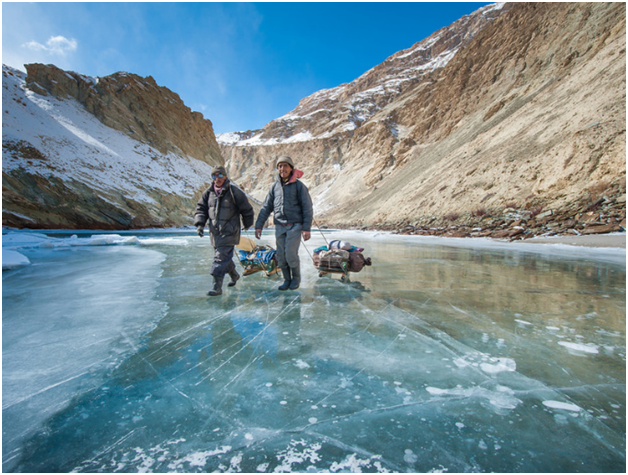
Flikr
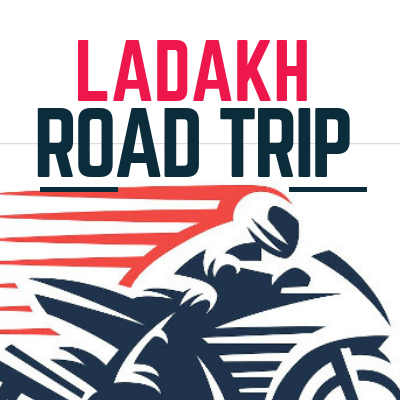
Comment (0)